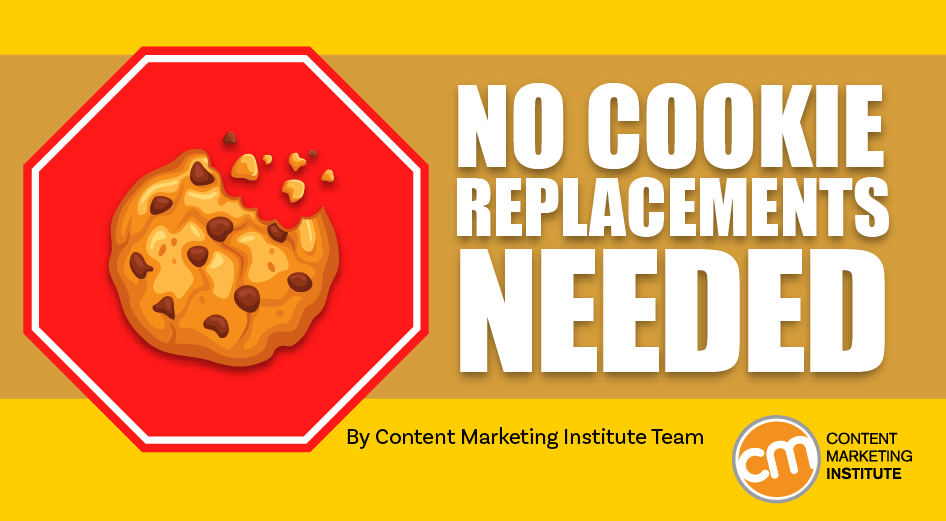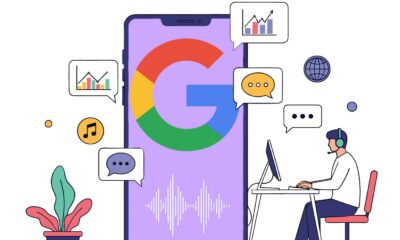MARKETING
Google Did a Cookie-Free Experiment. Should the Results Matter to You?

Third-party cookies don’t crumble easily.
In 2021, Google announced 2022 as the end of third-party cookies in its Chrome internet browser. It didn’t have a replacement in 2022, so it punted the disappearance down the road to 2024. And now, another delay could be on the horizon.
A cookie-less future is still expected, but what does that mean for marketers (and @Google) now, asks @Robert_Rose via @CMIContent. Click To Tweet
But even though personal data crumbs still leave trails that marketers and advertisers can follow, Google still expects – and experiments for – a cookie-less future.
Should you adjust your content marketing to respond to their findings or do something else?
CMI’s chief strategy advisor Robert Rose has some thoughts. Get his take in this week’s CMI News video, or keep reading for the highlights:
What will Google serve after cookies disappear?
In January 2022, Google announced FLEDGE – First Locally Executed Decisions over Groups Experiment. It would take too long to explain in detail the five-component system. Still, ostensibly it puts users (i.e., people surfing the web) into interest groups based on their content consumption. Advertisers could target topic interest groups instead of individuals.
But the ad world – mostly the publishers who sell ads – didn’t think FLEDGE was that great. So Google evolved FLEDGE into its Protected Audience API, which they shared earlier this month.
Now if all this talk makes your head spin, that’s OK. But let’s break down something more concrete that Google shared this past week. It released the results of its advertising tests for its interest-based audience solutions. They use Google’s Privacy Sandbox’s topics API to tap into a mostly anonymous aggregated set of internet data. It also uses first-party identifiers such as Publisher Provided IDs.
The experiment assessed the performance of ads using data from third-party cookies vs. ads using its interest-based audience solutions with privacy-preserving signals. Ad spending for the internet-based audience results was down 1% to 3% compared to third-party-cookie results. However, click-through rates remained within 90% of the status quo.
The experiment indicates results for ads using interest-based audience solutions are not that much better or worse than results for ads using third-party cookies.
@Google’s experiment testing ads with its interest-based audience solutions compared to third-party cookies brought “meh” results, says @Robert_Rose via @CMIContent. Click To Tweet
Is that good news?
“While these experiments show improvements in interest-based audience solutions, they really are asking the wrong question,” says CMI’s chief strategy advisor Robert Rose.
The indifference of cookies
Google’s experiment – and marketers’ interest in a cookie-free solution – stems from the belief that targeting audiences using third-party cookies has been their best choice.
But that conclusion doesn’t hold up with the research, Robert says.
In 2019, research found a publisher’s access to a user’s cookie could increase revenue by about 4%, which translates to $0.00008 per ad – yes, eight-hundred-thousandths of a dollar.
Having a user’s cookie leads to a revenue increase of about $0.00008 per ad, according to 2019 research, says @Robert_Rose via @CMIContent. Click To Tweet
Combine that finding with research from Dr. Augustine Fou, and the importance of cookies diminishes significantly. Fou finds while more relevant ads work better (i.e., targeting a publication category your audience frequents), hyper-targeting through personal information breaks down in effectiveness after more than three parameters of data.
That leads Robert to ask: “Who’s getting paid to sell the extra personal data parameters that make buying ads more expensive?
“It’s apparently not the publishers. Could it be that the big platforms like Google and Facebook aggregate the data?”
You don’t need a cookie replacement
Given all that, marketers should take a breath. Stop fretting about the cookie-replacement debate and start conducting your own experiments.
“Run tests of how your brand ads, content sponsorships, and other forms of paid media that don’t use third-party cookies or target perform,” Robert says.
He also advises investing more resources and time in developing your first-party data, so you don’t have to concern yourself about ad platforms and can better target and personalize the content the ads link to.
What are you doing with targeted advertising? How are you dealing with the coming disappearance of third-party cookies, whenever that is? Let us know in the comments.
HANDPICKED RELATED CONTENT:
Cover image by Joseph Kalinowski/Content Marketing Institute


















